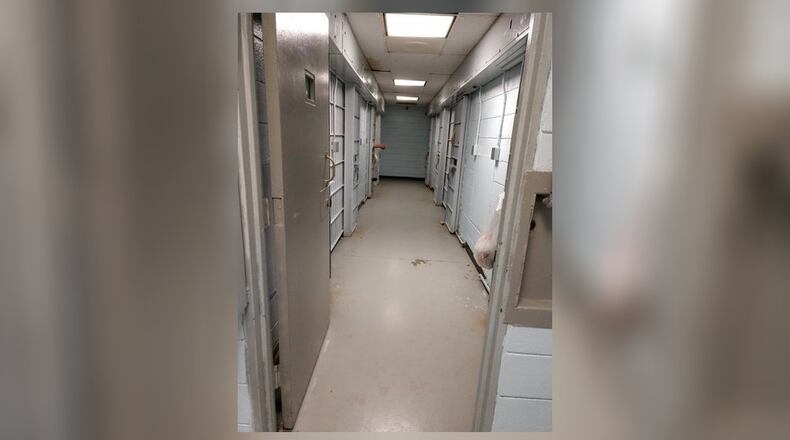The jail was inspected on Nov. 5, 2019, and three important and three essential standards were called out of compliance with the state’s Minimum Standards for Jails, which regulates local jails. Those standards included:
- Having an established security perimeter (essential)
- Having a secure booking area (essential)
- Having written policies/procedures for keys, tools and culinary equipment to be inventoried and use is controlled (important)
- Providing natural light in housing units, dorms, cells and/or day-space (important)
- Performing a health assessment, such as a tuberculosis test, on inmates prior to their 14th day of incarceration (essential)
- Ensuring that jail administrators and supervisors receive training in addition to the training specified for the position (important). This deficiency has been corrected as noted in the state’s final 2019 inspection report/plans of action letter
The standards concerning written policies about keys, the perimeter security and secure booking area were marked as deficiencies. The inspector discovered corrections officers were carrying perimeter keys and using them as part of their daily duties. The report said these keys need to be removed from the inside perimeter of the jail and keys should not be carried or stored in areas accessible to inmates.
In its 2018 inspection, the jail was not in compliance with one essential and two important standards, but was rated “compliant.”
The 2020 jail inspection is scheduled for later this fall, Birk said.
The nearly 45-year-old underground jail shares space with police headquarters on the lower level of the City Building. It was not designed for expansion and the state’s recommended capacity is 34 inmates. The 70-cell jail is one of five municipal full-service jails in Ohio.
“There are some things we just can’t get into compliance,” Birk said. “It’s nothing that the state will come and shut it down. The things we can fix, we’ll fix.
“It’s cost-effective to operate our own jail versus taking prisoners to (the Butler) County Jail. It just makes sense.”
He said he is looking at possible long-term solutions to renovate or possibly replace the city jail with a new facility. The 2020 budget to operate the jail was more than $1.3 million.
City Manager Jim Palenick said work on the jail and replacing the city’s substandard fire stations are major capital projects that require long-term solutions and a funding stream.
“The reality is when substandard facilities are nearing the end of their useful life, we need to look at our future needs and start planning,” he said. “From what I understand, it is economically and operationally less beneficial to the city to close the jail.”
Palenick said he would like to look at building a standalone jail in a new location and determining a plan to pay for it, such as contracting beds with other jurisdictions to cover the debt service.
Many local leaders, past police chiefs, judges, residents and police union members strongly oppose the closing of the Middletown jail when the topic is discussed publicly.
Ohio has 313 detention facilities. The state’s other 87 full-service jails are operated by county sheriffs or are regionalized by multiple counties. The remaining facilities are temporary detention for six to 12 hours or as long as 12 days.
About the Author

